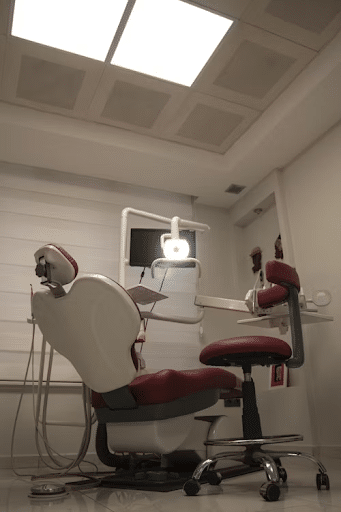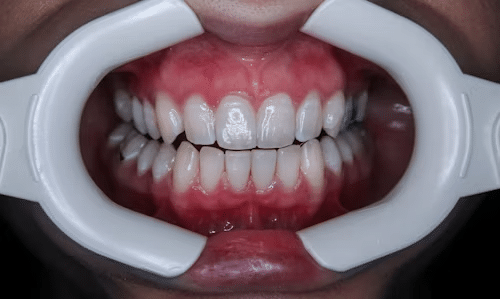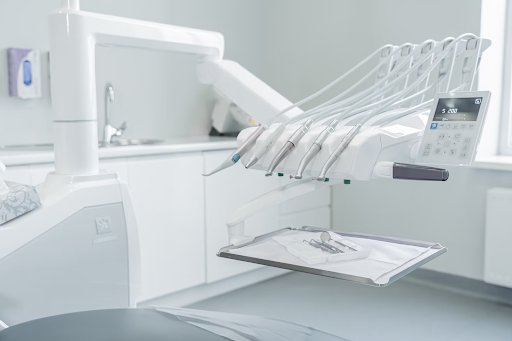Pill Sedation in Tyler, TX: A Simple Way to Ease Dental Fear

For many patients, the thought of going to the dentist brings on feelings of anxiety or even fear. Whether it’s the sound of dental instruments, a sensitive gag reflex, or past negative experiences, dental anxiety is more common than most people realize. At Smith Dental Care, we understand that fear can make it difficult to get the care you need for a healthy, confident smile. That’s why we offer pill sedation in Tyler, TX—a simple and effective way to help patients relax and receive treatment in complete comfort.
What Is Pill Sedation?
Pill sedation, also known as oral conscious sedation, involves taking a prescribed medication before your dental appointment to help you feel calm and at ease. Unlike IV sedation or general anesthesia, pill sedation doesn’t put you fully to sleep. Instead, it creates a deeply relaxed state where you remain conscious and responsive but free from the anxiety that often accompanies dental procedures.
The medication commonly used for oral sedation is from the benzodiazepine family, which has a long history of safe and effective use for managing anxiety. These medications reduce activity in the parts of the brain responsible for fear and stress, allowing you to undergo dental care without discomfort or worry.
Why Patients Choose Pill Sedation
Pill sedation offers a number of advantages for patients who want a gentler, more comfortable dental experience. It’s easy to take, requires no needles, and provides predictable, calming effects that last throughout your appointment. Patients often report that time seems to pass quickly, and many remember little to nothing about the procedure afterward—a benefit for those who experience severe dental anxiety.
Some of the most common reasons patients choose pill sedation in Tyler, TX, include:
- Fear or anxiety about dental visits
- Difficulty getting numb with local anesthesia alone
- A sensitive gag reflex
- Extensive dental work needed in a single visit
- Previous traumatic dental experiences
At Smith Dental Care, we customize sedation options for each patient based on their comfort level, health history, and the type of procedure being performed. Our goal is to make every visit as stress-free as possible.
What to Expect Before and During Your Appointment
If you’re interested in pill sedation, the first step is a consultation with one of our experienced dentists. During this visit, we’ll review your medical history, current medications, and any past experiences with sedation to ensure that oral sedation is safe and appropriate for you.
Before your procedure, you’ll take a small pill about an hour before your appointment. By the time you arrive, you’ll begin to feel relaxed and calm. Because the effects of the medication can last for several hours, you’ll need to arrange for someone to drive you to and from our office.
Once you’re seated comfortably, our dental team will monitor you throughout your procedure to ensure your safety and comfort. You’ll remain awake and able to respond to simple instructions. Most patients describe feeling drowsy and detached from the sights, sounds, and sensations of the dental visit.
After your treatment is complete, you’ll continue to rest until you feel ready to leave. Many patients find that they remember little about the procedure once the medication wears off—a welcome relief for anyone who struggles with dental fear.
Benefits of Pill Sedation
One of the biggest advantages of pill sedation in Tyler, TX, is that it allows anxious or fearful patients to finally receive the dental care they’ve been postponing. Avoiding the dentist can lead to worsening oral health problems such as decay, gum disease, or infection. These may require more extensive treatment later on. Sedation dentistry makes it possible to address these issues comfortably and proactively.
Other benefits include:
- Comfort and relaxation: You’ll feel at ease before, during, and after your appointment.
- Fewer appointments: Because sedation allows longer treatment sessions, multiple procedures can often be completed in one visit.
- Reduced sensitivity: Sedation can minimize discomfort and gag reflexes, making treatment easier for both the patient and the dental team.
- Improved oral health: Patients who use sedation are more likely to maintain regular dental care and prevent serious dental problems.
Safety and Monitoring
Safety is always our top priority at Smith Dental Care. Pill sedation has been used safely in dentistry for decades. Our team follows strict protocols for dosage, monitoring, and recovery. We’ll carefully review your medical background and explain exactly what to expect before, during, and after sedation.
Throughout your visit, we monitor your vital signs and comfort level to ensure you remain safe at all times. Our experienced dental professionals are trained in sedation techniques and emergency procedures, giving you complete peace of mind from start to finish.
Is Pill Sedation Right for You?
If you’ve been avoiding the dentist due to fear or anxiety, pill sedation in Tyler, TX, may be an ideal solution. It’s suitable for most healthy adults. It can make even complex dental treatments feel easy and stress-free. However, it may not be recommended for pregnant patients, individuals with certain medical conditions, or those taking specific medications.
During your consultation, our team will discuss your options in detail. We’ll help you decide whether oral sedation is the best fit for your needs.
Experience Gentle Dentistry at Smith Dental Care
At Smith Dental Care, we believe every patient deserves a comfortable and positive dental experience. Our compassionate team takes the time to listen, explain your options, and tailor every treatment to your comfort level. Are you coming in for a routine cleaning, restorative treatment, or a more complex procedure? Our sedation options can make your visit truly stress-free.
You don’t have to let fear or anxiety keep you from a healthy smile. With pill sedation in Tyler, TX, you can finally relax in the dental chair and receive the care you deserve in complete comfort.



